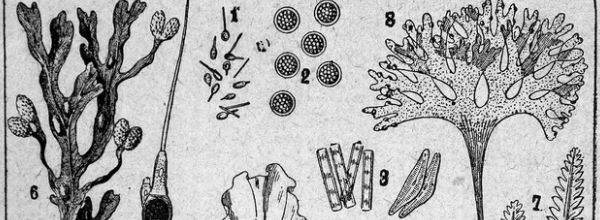One of the major roadblocks to the development of novel therapies is the lack of robust and reliable animal models. Selecting and validating animal models that mimic human conditions is challenging, especially when faced with chronic multi-factorial diseases such as diabetes and obesity. Acknowledging this problem, the National Institutes of Health initiated the Animal Models of Diabetic Complications Consortium (AMDCC)1, with the goal of defining criteria for the development and testing of pre-clinical models particularly of diabetic kidney disease2.
Considering some of these basic criteria, as outlined in this article, researchers from all fields can improve the translatability of their in vivo discovery and development activities.
Key Considerations
Species, Strain and Gender
Rodents remain the species of choice for most pre-clinical studies because of the relatively low cost of maintenance and ease of breeding and genetic manipulation. Particular strains prove to be more or less susceptible to developing disease. For example, the commonly used C57BL6 strain is relatively resistant to developing diabetic nephropathy when compared to the FVB strain3.
As in humans, notable differences also exist between genders. This should be taken into consideration when that differentially regulated pathway represents a key pathogenic mechanism driving the disease or investigational drug mechanism of action. For example, male spontaneously hypertensive rats (SHR) have higher blood pressures than females and, thus, prove to be better models for cardiovascular and renal disease4.
Exhibit Key Features of the Disease
- First and foremost, the model of choice should display the hallmark features of the disease pathogenesis as seen in humans.
- Key molecular pathways that have been shown to be activated or repressed in patients should be similarly dysregulated in the model.
- Moreover, the model should display the characteristic morphological and structural abnormalities of the disease.
- Established molecular pathways and disease morphologies are necessary for monitoring of disease development and any therapy-mediated modification.
Expression and Regulation of the Biological Target
The pursuit of a novel drug target in the pre-clinical setting requires establishing its expression in the model. Concordantly, demonstrating up- or down-regulation of the pathway through which the target is thought to act would support the utility of the model for other modulators of that class.
Feasibility
From a logistical perspective, animal-based research is expensive and time-consuming. Researchers should therefore aim to employ models that:
- Manifest disease over a short duration
- Reliably display a large therapeutic window
- Are highly reproducible (across many different laboratories)
- Show responsiveness to known modulators of the disease.
Why Are Good Models Important?
Validating (or invalidating) a potential drug therapy or intervention represents a critical step in the drug development value chain. The quality and relevance of the data obtained at this step depends, in part, on having the right system to test in.
Secondly, studying animal models that more closely reflect the human condition may help to improve our understanding of the disease process and thus reveal new ways to target it.
Lastly, having a clear understanding of limitations of the model/s used will ensure correct interpretation of findings and avoid eager extrapolations of animal data to the clinic.
Do We Need to Use Them at All?
Innovative alternative models are being developed to minimize the use and unnecessary suffering of animals in experimental research. Some examples of exciting recent advances in this area include microchip organs5, 3D printing organs and tissues6 and disease computer simulations7. However, for diseases involving multiple organs and overlapping pathogenic processes studying the entire organism appears to be the only way (to date) to capture the full picture and all of its unexpected nuances.
Furthermore, pre-clinical testing is a requirement. The major regulatory authorities that decide whether a new investigational drug has a sufficient benefit-risk profile to warrant testing in humans demand a solid animal data package containing information such as safety, dosing, pharmacokinetic and pharmacodynamic profiles.
Focus (and Re-Focus) on Human Disease
Let’s return to the subject of interest – patients! Any findings in animal models should be reinforced by findings from human tissue and cells. Indeed, access to tissue biobanks or surgical specimens is a huge advantage when validating target expression. Additional, but often overlooked, resources are open-access online databases that contain a wealth of gene- and genome-disease association information from patients. (For Diabetic Nephropathy, Nephromine8 is an excellent tool).
Combining robust animal models with cutting-edge technologies has lead to progress towards cures for human diseases with a clear genetic cause. For example, mice with Duchenne Muscular Dystrophy have cured using the revolutionary gene-editing CRISPR/Cas9 technology9.
Take Home Message
No single animal model recapitulates all of the features of a human disease. Taking into consideration the above points when using multiple animal models of the human disease in question will help to improve clinical translatability, pre-clinical drug discovery and development activities.
References and Further Reading
- Link to Diabetes Complications Consortium models page: https://www.diacomp.org/shared/modelsPhenotype.aspx
- Brosius et al. (2009) Mouse models of diabetic nephropathy. J Am Soc Nephrol. 12:2503-12
- Qi et al. (2005) Characterization of susceptibility of inbred mouse strains to diabetic nephropathy. Diabetes. 54(9):2628-37
- Reckelhoff et al. (1999) Gender Differences in Hypertension in Spontaneously Hypertensive Rats. Hypertension. 34:920-923
- Bhatia and Ingber. (2014). Microfluidic organs-on-chips. Nature Biotechnology. 32: 760–772
- Murphy and Atala. (2014). 3D bioprinting of tissues and organs. Nature Biotechnology. 32: 773–785
- Belmonte et al. (2016). Virtual-tissue computer simulations define the roles of cell adhesion and proliferation in the onset of kidney cystic disease. Mol Biol Cell. 22: 3673-3685
- Link to Nephromine: www.nephromine.org
- Long et al. (2014). Prevention of muscular dystrophy in mice by CRISPR/Cas9–mediated editing of germline DNA. Science. 345(6201): 1184-1188







